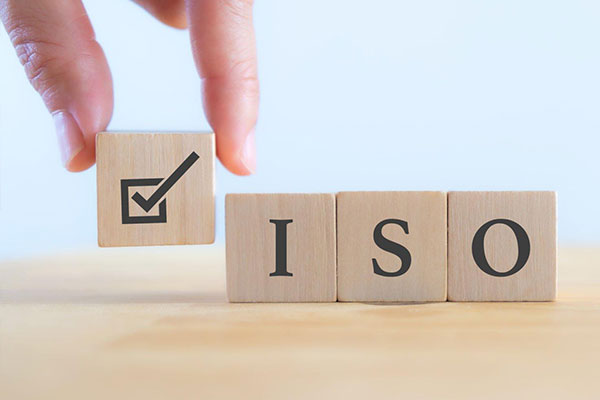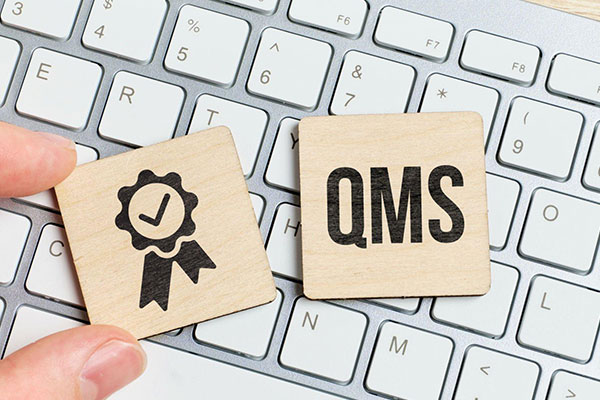As a business owner, you must have wondered how to maintain the quality of your products and services. You must have also wondered how you can increase your cost savings without compromising the quality of products or services. A Quality Management System (QMS) solves all of these problems. In this article, we will talk about what a quality management system is, how ISO 9001 plays a role in developing a quality management system and its associated benefits.
What is ISO 9001, and why is it important?
ISO 9001 belongs to the ISO 9000 family of standards, all of which focus on quality management. ISO 9001 is the only standard in its family that is auditable. It contains recommendations for organisations to implement an effective and sustainable QMS.

At the core of ISO 9001, seven fundamental principles of quality management help organisations enhance the efficiency of the processes and the quality of their products/services. These include:
- Customer focus: The standard asks organisations to evaluate their objectives and innovations that address customer requirements and apply the findings to product performance. Additionally, the standard requires that customer complaints be systematically logged into a system, and corrective actions should be taken.
- Leadership: The standard understands that organisations can only succeed when their leaders establish and maintain an environment that fosters quality objectives. As a result, the standard requires leadership at all levels to be aligned with the organisational objectives and drive a quality-focused culture by making relevant policies and conducting regular reviews. If you want to learn more about leadership and its role in obtaining ISO 9001, visit the ISO 9001 preparation page.
- Process approach: The standard requires leaders to manage and control business processes, linking together individual processes to form a single and coherent system. Adopting this approach helps your organisation achieve more consistent and predictable results.
- Involvement of people: Employee engagement allows employees to become more competent, empowered and dependable; therefore, the standard wants organisations to recognise their achievements and integrate their feedback.

- Continual improvement: The standard recommends organisations have an ongoing effort to identify new opportunities that enhance the processes, thereby recommending constant evaluation of process improvement activities and customer needs.
- Evidence-based decision making: The standard requires all decisions to be data-driven and therefore recommends utilising appropriate tools and methods to evaluate all available data in an accurate, reliable, and secure manner.
- Relationship management: The standard understands that companies that successfully establish relationships with relevant partners, including investors, vendors, business associates and sellers, can ensure seamless continuity of the supply chain. Therefore, the standard recommends organisations implement processes that improve relationship management.
What is a quality management system?
You can build a quality management system when you implement the recommendations of ISO 9001 and focus on the seven quality principles. Essentially, QMS is a formalised system of responsibilities, procedures, processes and documents that are collected to achieve the quality objectives of an organisation.
In simpler words, the purpose of a QMS is that it helps to direct and coordinate an organisation’s efforts to meet regulatory requirements and customer needs while improving its efficiency and effectiveness continuously.

Benefits of QMS
Implementing a QMS based on the recommendations stipulated in the ISO 9001 standard affects every aspect of your organisation’s performance. There are several benefits of a documented QMS, including:
- Enhanced customer loyalty: As the QMS requires you to have a customer focus in all your processes, you can consistently meet the requirements of your target audience, which instils confidence in the organisation, leading to more customers, more business and more sales.
- Achieving organisational goals: In addition to helping you meet your financial goals due to enhanced customer acquisition and loyalty, the QMS helps to meet the organisation’s requirements, including compliance with appropriate legislations and provision of products/services in the most cost-effective, resource-effective and timely manner. As you save resources, time and effort, you create more room for profit, growth and expansion.
- Enhanced efficiency: The recommendations define, improve and control your processes, reducing waste and improving efficiency.

- Significant waste reduction: The process approach of the QMS requires you to investigate the efficiency of all your processes. As a result, all redundancies, overlaps and the unnecessary burden is removed from your processes, thereby improving their efficiency and significantly reducing waste.
- Happier employees: The consequence of more efficient processes is that there is more clarity regarding roles, responsibilities and job duties. This increases productivity. Moreover, your staff is happier, as employee engagement is one of the core principles of the QMS. So, when the organisation recognises the achievements of its employees and continuously asks for their input, they end up feeling happier, more valued and appreciated.
Conclusion
The ISO 9001 standard recommends building an effective and sustainable quality management system. The seven principles of QMS that are outlined in the standard are customer focus, leadership, relationship management, evidence-based decision-making, process approach, continuous improvement and employee engagement.
Using these recommendations and principles, a QMS can be built that will allow you to enhance customer loyalty, achieve organisational goals, enhance efficiency, reduce waste and create happier employees.








Users Comments
Get a
Quote